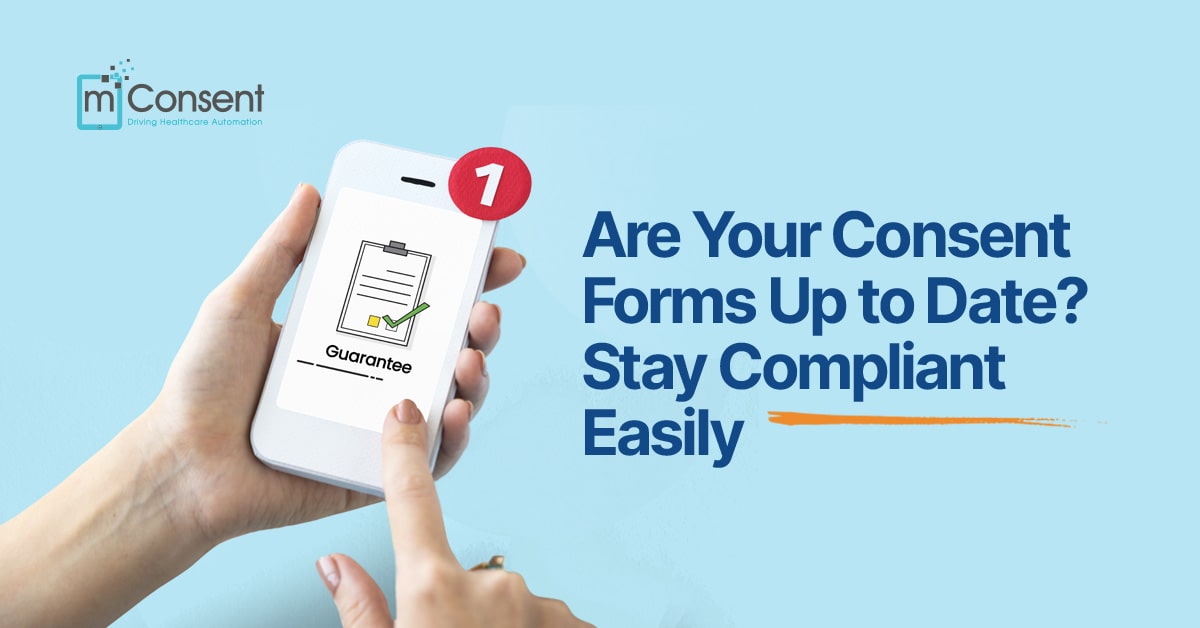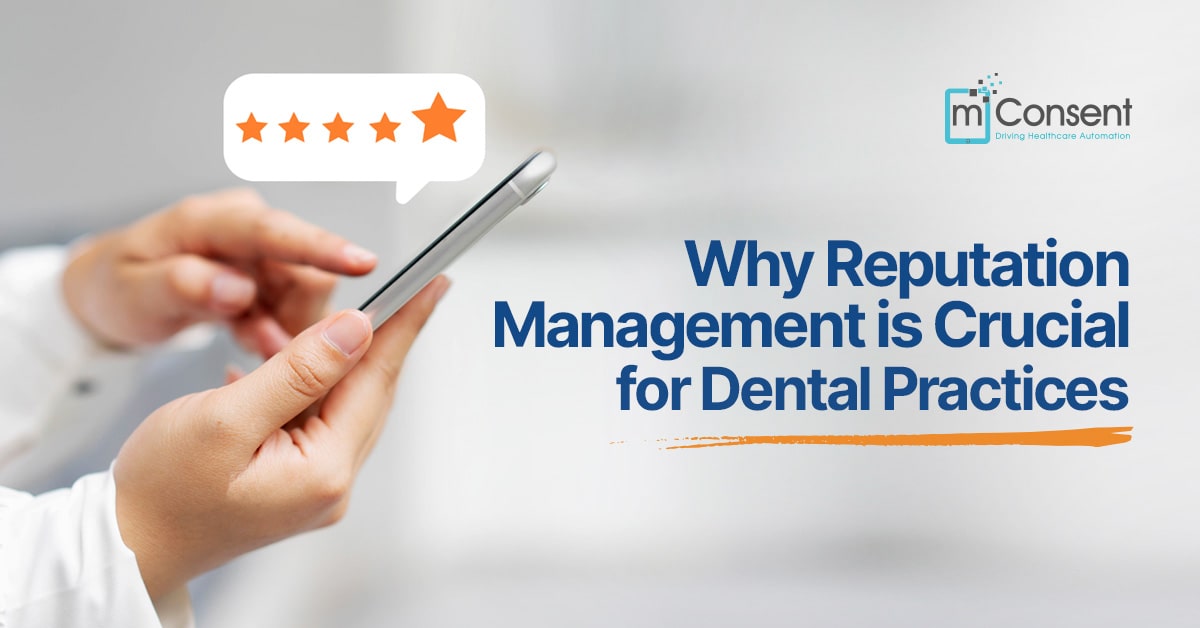Step into any dental office today, and chances are you’ll still see clipboards stacked on the front desk. Patients fill out page after page with pens that may or may not work. Staff later squints at the handwriting, retyping every detail into the computer. It’s a process that feels outdated and it is.
In a world where people manage their bank accounts from their phones and check in for flights with a single tap, it seems almost strange that so many dental practices are still tied to paper forms. But the shift from paper to digital doesn’t always happen easily, even when everyone agrees it’s a step in the right direction.
Digital dental forms offer real benefits. They’re faster, more accurate, and can dramatically improve the patient experience. They also make compliance with HIPAA and other regulations simpler and more reliable. Yet, for many practices, moving to an electronic system comes with roadblocks. Staff may be hesitant. Patients might struggle with technology. Existing software could make integration feel more complicated than it should be.
That’s exactly why mConsent was developed. This platform was created with dental practices in mind and is designed to make the transition to digital forms as smooth and painless as possible. It’s not just about new technology. It’s about real-world solutions that fit into your existing workflow without causing more problems than they solve.
In this article, we’ll walk through the core reasons digital forms are becoming the standard, take an honest look at why implementation sometimes fails, and explore how mConsent helps dental teams tackle each of those hurdles, one at a time.
Why Electronic Forms Are Worth the Change
There’s a good reason why digital forms are gaining traction in dental offices across the country. They solve problems that practices have dealt with for decades.
One of the biggest issues is time. Paper forms slow things down. A new patient arrives, fills out a bunch of forms, and then waits while the front desk team types everything into the system. If something’s missing or hard to read, it takes even longer. Multiply that by every patient every day, and you’re looking at hours of lost productivity.
Digital forms fix this by letting patients complete their information online, often before they even arrive. The data goes straight into your system. No one has to re-enter it. No one has to chase down missing details. It’s all there, ready when you need it.
Accuracy is another major win. When people fill out forms electronically, the chances of making a mistake drop significantly. Typos, skipped sections, and handwriting problems become a thing of the past. And since the forms are integrated with your practice management software, the right data ends up in the right place automatically.
Patients appreciate the convenience too. No one likes filling out forms in a waiting room, especially when they’re nervous about an upcoming procedure. With mobile-friendly forms, they can complete everything at home or on the go, at their own pace. It’s one less stressor for them and one more step toward a modern, efficient practice.
Then there’s security. Paper forms are surprisingly easy to misplace or leave exposed. Digital forms, when managed properly, are stored securely, encrypted, and access-controlled to keep patient information safe.
And let’s not forget the cost savings. Between printing, scanning, shredding, and storage, managing paper is more expensive than many realize. Digital forms help cut those costs, while also being more environmentally friendly.
What Gets in the Way of Implementation
If the benefits are so clear, why aren’t all practices using digital forms already? That’s a fair question, and the answer isn’t always simple.
First, there’s the human factor. Change makes people nervous. Your front desk team may be used to the current process. They’ve built routines around it. Asking them to learn a new system might feel overwhelming, especially if they’re not confident with technology.
Then there’s the issue of compatibility. A lot of practices already use platforms like Dentrix, Eaglesoft, or Open Dental. They’ve invested time and money into making those systems work. The idea of adding something new, especially something that might not integrate well, can bring up concerns about wasted effort or double work.
Patients can present another challenge. Not everyone is comfortable using digital tools. Some older patients may find online forms confusing. Others may not have smartphones or internet access at home. Practices worry that going digital could exclude some of their most loyal patients.
And of course, there are the usual worries about security, compliance, and cost. Staff might wonder if going digital means risking a data breach. Practice owners might hesitate because they’re unsure about the return on investment. And everyone wonders how long it will take to get up and running.
These concerns are valid. But they’re not impossible to overcome.
How mConsent Makes the Transition Easier
mConsent isn’t just a product, it’s a full-service solution built specifically for dental practices. It addresses every one of the challenges mentioned above and does it in a way that’s approachable and practical.
For starters, the software is easy to use. The layout is intuitive, with a clean dashboard that makes sense right away. Even team members who aren’t comfortable with new technology usually find it straightforward after just a little hands-on time. Training materials are built in, and mConsent offers support every step of the way.
The platform connects seamlessly with the most popular practice management systems, including Dentrix, Eaglesoft, and Open Dental. You don’t have to switch systems or duplicate work. Completed forms are imported directly into the patient chart, which saves time and reduces the chance of errors.
Patients love how simple it is. There’s no app to download. They get a link by text or email and can open the form right on their phone. The forms are available in multiple languages and are designed to meet accessibility guidelines. That means they work for patients with different needs and tech comfort levels.
Security is another area where mConsent shines. All data is encrypted and stored in the cloud using strict access controls. The platform is fully HIPAA compliant, giving your team confidence that they’re protecting patient information the right way.
As for cost, the subscription model is flexible. Whether you’re a small family office or a large group practice, there’s a plan that fits. And most practices recover the investment quickly just through the time saved on admin tasks and fewer errors in patient intake.
mConsent also offers help with data migration. If you’ve got years of patient forms in storage or scanned PDFs cluttering up your system, the mConsent team can help digitize and organize that information, making your records cleaner and easier to manage moving forward.
Tips for a Smooth Rollout
If you’re thinking about making the switch, a little planning goes a long way. Start by testing the system with a few patients. Pick a small group, maybe just your hygiene appointments and see how it goes. Gather feedback and adjust as needed.
Choose one or two team members to lead the transition. Let them dive into the training and become the go-to people when questions come up. This builds confidence across the team and creates a sense of ownership.
Keep communication clear and positive. Explain to your staff why you’re making the change and how it will help them in the long run. Highlight the ways it will make their day smoother and reduce busywork.
Let your patients know what’s changing too. Send out emails or text messages ahead of their appointments, letting them know they’ll receive a form to fill out in advance. Put a friendly sign at your front desk explaining the new system. People are usually receptive when they understand the why behind the change.
And don’t be afraid to lean on mConsent’s support team. They offer live chat, one-on-one onboarding, video tutorials, and webinars to help guide you through the process.
What the Future Looks Like
The world of digital forms is evolving quickly. In the not-so-distant future, we’re going to see even smarter systems, forms that pull in data from a patient’s history, pre-fill common fields, or even respond to voice commands.
Integration with teledentistry is also on the rise. Patients might soon complete pre-appointment forms during a video consult, saving even more time in the chair. And for those focused on accessibility and safety, touchless intake and voice-enabled forms will become increasingly important.
mConsent is actively developing these features. The team is exploring AI tools, real-time analytics, and new ways to personalize the intake process so that dental practices stay ahead of the curve without having to reinvent their workflows.
Conclusion
Switching from paper to digital dental forms might seem like a big leap, especially if you’ve been doing things the same way for years. But once you get past the initial setup, the benefits are hard to ignore.
Patients appreciate the convenience. Staff gets back hours each week. Errors go down. Compliance becomes easier. And your practice runs more smoothly.
mConsent isn’t just offering a tool, it’s offering support, structure, and a smarter way to run your office. If you’ve been putting off the switch, now might be the time to take that next step.
Let your forms work for you, not against you.
FAQ's
1. What common challenges do practices face when trying to implement electronic forms?
The main challenges include staff hesitation to learn a new system, concerns about compatibility with existing practice management software, the worry that patients may not be comfortable with the technology, and valid questions about security and cost.
2. Will mConsent's electronic forms integrate with my practice's existing software?
Yes, mConsent is designed for seamless integration with the most popular practice management systems, including Dentrix, Eaglesoft, and Open Dental. This ensures that completed forms are imported directly into the patient chart, eliminating the need for duplicate work.
3. What if my patients aren't comfortable with technology or don't have a smartphone?
mConsent’s forms are simple to use. There's no app to download; patients receive a link by text or email. For those who aren’t tech-savvy, they can still fill out the forms on an in-office tablet. The platform also offers forms in multiple languages to meet diverse patient needs.
""

![HIPAA Release Form – All you Need to Know [Instant Download]](https://mconsent.net/wp-content/uploads/2021/09/HIPAA-Release-Form-All-you-Need-to-Know-Free-Release-Form.jpg)















